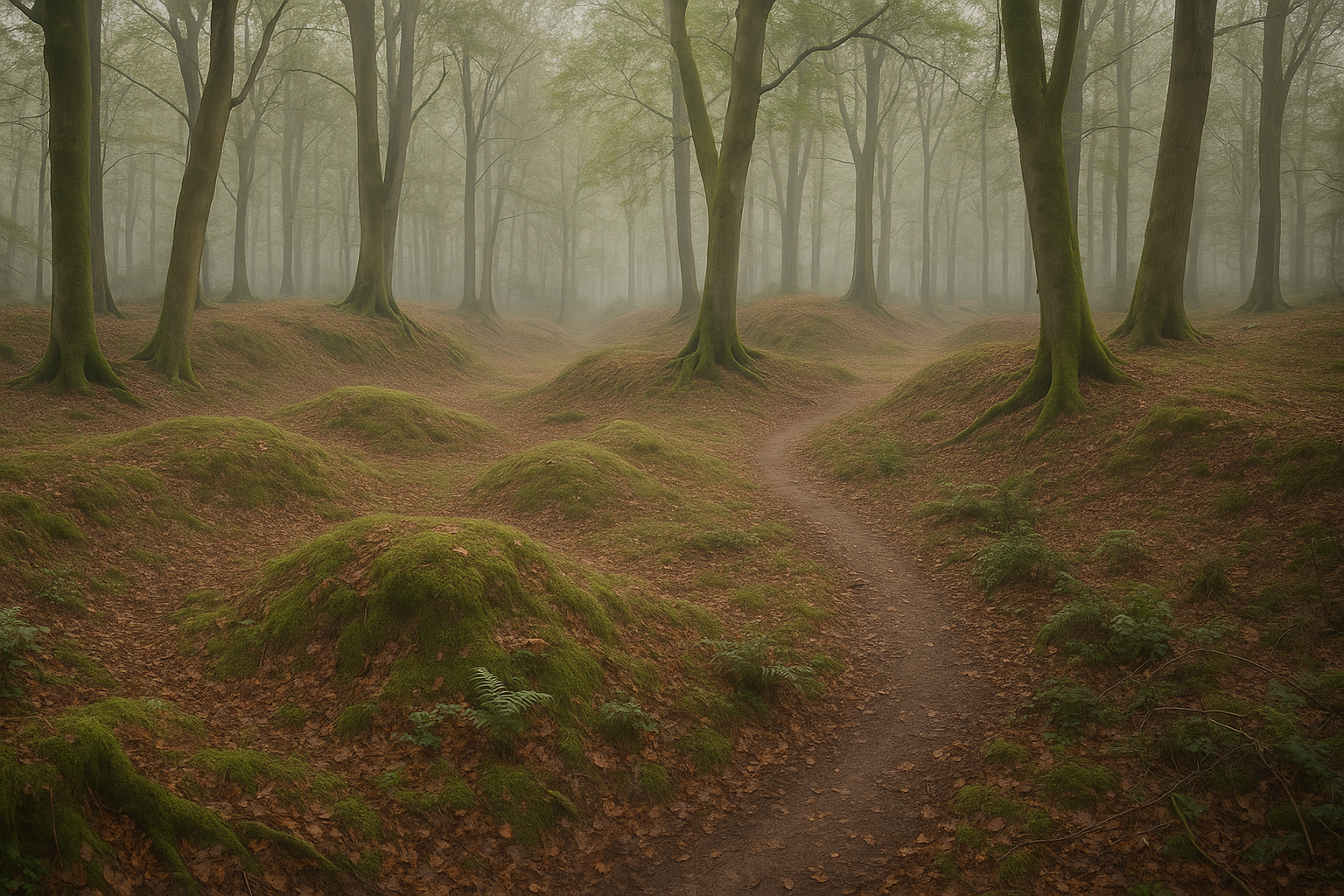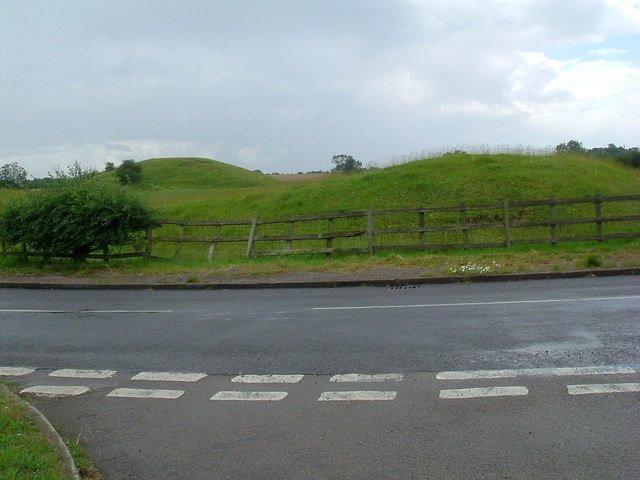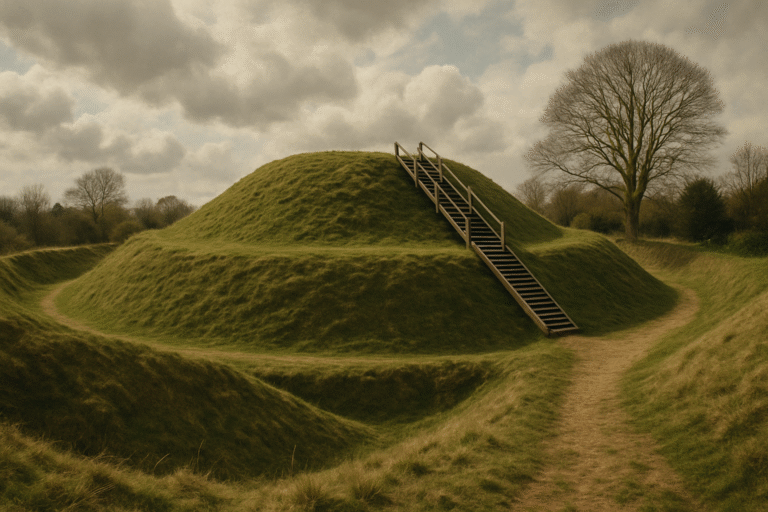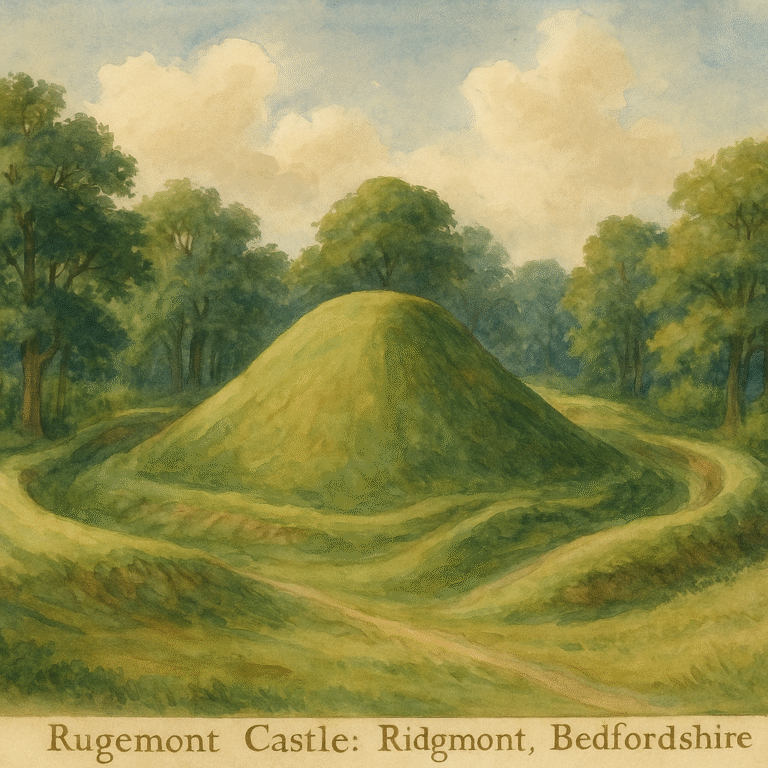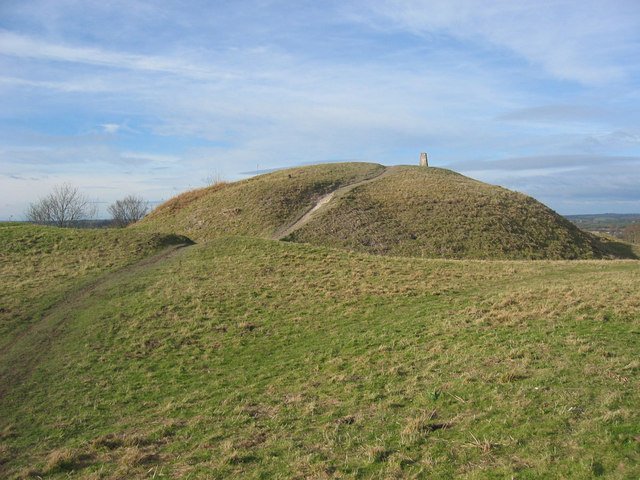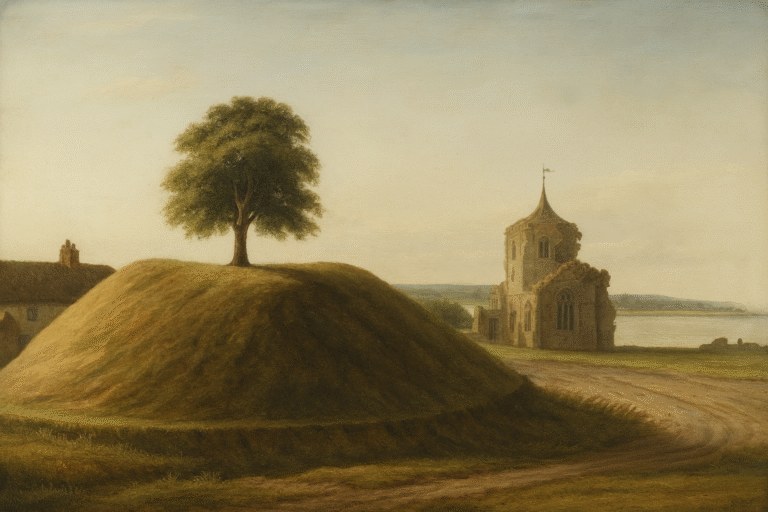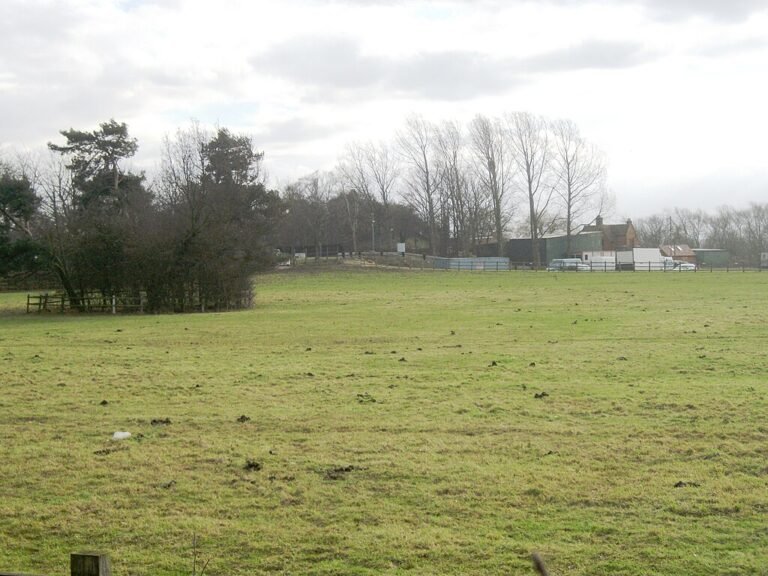Clapham Castle (Clapham Camp), Bedfordshire: A Quiet Earthwork of Depth
Clapham Castle (Clapham Camp): Exploring Bedfordshire’s Hidden Earthworks
When most travellers think of castles, they picture soaring towers, stone battlements, and dramatic ruins perched above rivers or cliffs. Yet not all castles come in such familiar forms. In a quiet patch of woodland near Bedford, the earthworks of Clapham Castle, also known as Clapham Camp, whisper a different kind of story. Subtle, grassy ridges and banks trace outlines of a long-forgotten fortification — one that connects us to centuries of human settlement and shifting landscapes.
This guide takes you into the history, intrigue, and practicalities of visiting Clapham Castle, while broadening out to explore Bedfordshire’s heritage sites and the wider theme of hidden historic landscapes in the UK. Whether you’re a family in search of an off-the-beaten-path walk, a couple intrigued by history and woodland scenery, or a solo traveller with a taste for quiet discoveries, Clapham Camp is worth adding to your itinerary.
A Glimpse into Clapham Castle’s Past
Unlike stone fortresses such as Warwick or Windsor, Clapham Castle was never a towering stronghold. Instead, it belongs to the tradition of earthwork enclosures, which may have served defensive, symbolic, or settlement purposes. Local records suggest Clapham Camp may date back to the Iron Age, when communities across southern Britain constructed hillforts and enclosures as centres of power. Others argue that it could have been reused or reshaped during the medieval period, perhaps as a manor enclosure or minor fortification.
What we see today are earth banks and ditches, softened by centuries of weather and overgrowth. These subtle ridges may not look dramatic, but they are invaluable to archaeologists: physical clues of how people organised space, defended themselves, and marked their territories long before our time.
Key Facts and Figures
- Location: Woodland north of Clapham village, near Bedford, Bedfordshire
- Type: Earthwork enclosure (likely Iron Age origins, later reuse possible)
- Features: Visible banks and ditches in a wooded setting
- Condition: Low earthworks, best seen in winter or early spring when vegetation is sparse
- Accessibility: Public footpaths nearby; some uneven woodland terrain
- Nearby Attractions: St Thomas of Canterbury Church, Bedford Castle, Clapham Park
Clapham Castle in Context
Castles in Bedfordshire
Bedfordshire isn’t as castle-dense as Northumberland or Wales, but it does boast intriguing sites:
- Bedford Castle: Built after 1100, once a powerful Norman stronghold, besieged and demolished by Henry III in 1224. Today, only its motte remains, now part of an archaeological park in Bedford town centre.
- Mowsbury Hillfort: An Iron Age site with medieval reuse, northeast of Bedford, offering striking parallels to Clapham Camp.
- Cainhoe Castle: Earthworks near Clophill mark the remains of a motte-and-bailey castle built by the de Cainhoe family after the Norman Conquest.
Clapham Camp fits into this landscape of lesser-known sites: smaller, quieter, but integral to the tapestry of Bedfordshire’s defensive and domestic history.
Broader Themes: The Allure of Hidden Heritage
Sites like Clapham Camp remind us that heritage isn’t always dramatic ruins. Often, the most evocative places are those you stumble across — a grassy mound in a field, or a ditch winding through woods. These earthworks offer:
- For Families: A chance to turn a woodland walk into an adventure of “spot the earthwork”.
- For Couples: A romantic, off-grid stroll where history and nature combine.
- For Solo Travellers: A peaceful moment of reflection in landscapes shaped by millennia.
Planning Your Visit
Getting There
- By Car: Clapham lies just north of Bedford, accessible via the A6. Parking is available in the village; woodland paths lead towards the site.
- By Public Transport: Bedford is well connected by rail to London St Pancras (around 40 minutes). From Bedford, local buses serve Clapham village.
- Walking/Cycling: For those staying in Bedford, Clapham can be reached by foot or bicycle in under an hour along local paths.
Terrain & Access
- Expect woodland paths with uneven ground — sturdy walking shoes are a must.
- Best visibility of the earthworks comes in autumn and winter, when foliage is low and the low sun casts shadows across the banks.
- The site has no visitor centre, toilets, or café — it’s an authentic, low-key heritage stop.
Photography & Exploration Tips
- Visit early morning or late afternoon for dramatic shadows that bring the earthworks to life.
- Bring an OS map or a GPS app to trace the enclosure lines.
- Pair your visit with a stop at other Bedfordshire sites to enrich the day.
Suggested Itineraries
1. Half-Day Local Heritage Walk
- Morning: Arrive in Clapham and explore the woodland earthworks of Clapham Castle (1–2 hours).
- Midday: Visit St Thomas of Canterbury Church, a Grade I listed building with Anglo-Saxon origins and Victorian restoration.
- Afternoon: Stroll to Clapham Park, a Gothic Revival country house (exterior viewing) and its surviving lodge.
- Evening: Enjoy dinner at a traditional Bedfordshire pub in nearby Bedford.
2. Full-Day Bedfordshire Castle Loop
- Morning: Start at Clapham Castle’s woodland earthworks.
- Late Morning: Drive into Bedford to explore Bedford Castle Mound and its archaeological park.
- Afternoon: Head to Mowsbury Hillfort or Cainhoe Castle for a broader sense of Iron Age and Norman defensive sites.
- Evening: Return to Bedford for riverside dining or stay overnight for more explorations.
Where to Eat & Stay
Eating Nearby
- Bedford Town Centre (10 minutes by car): A range of cafés, pubs, and restaurants.
- Village Pubs: Many villages around Bedford, including Clapham, have traditional pubs offering hearty meals.
- Picnics: Perfect for families — pack lunch and enjoy in Clapham’s woodlands or by the River Great Ouse in Bedford.
Staying Overnight
- Bedford: Hotels and B&Bs cater to all budgets, from boutique riverside stays to family-friendly inns.
- Clapham & Surrounds: Characterful cottages and guesthouses offer a rural retreat close to Bedford.
- Wider Bedfordshire: Countryside inns and farm stays make great bases for exploring heritage sites further afield.
Seasonal Events and Special Experiences
- Spring/Summer: Combine your visit with Bedford’s riverside festivals and outdoor concerts.
- Autumn: Woodland walks around Clapham glow with golden leaves — perfect for spotting earthworks.
- Winter: Low vegetation makes the banks clearest. Nearby Bedford Christmas markets add a festive finish.
Beyond Clapham: Wider UK Inspirations
Clapham Camp’s subtlety is a reminder that not all castles are dramatic ruins. Across the UK, you’ll find earthworks and lesser-known sites that reward curious explorers:
- Borough Hill, Daventry (Northamptonshire): One of the largest Iron Age hillforts in Britain.
- Old Sarum (Wiltshire): Earthworks surrounding a ruined Norman castle and cathedral foundations.
- South Cadbury Castle (Somerset): A vast Iron Age hillfort linked to Arthurian legends.
By seeking out these quieter places, you’ll discover a different, more intimate side of UK heritage travel.
Final Thoughts: Why Visit Clapham Castle?
Clapham Castle (Clapham Camp) may not have the grandeur of stone castles or the fame of major heritage sites, but that is precisely its charm. Hidden in the woods, its earth banks carry the weight of centuries — a tangible reminder of how humans have shaped and reshaped the land. For travellers, it offers something different: quiet discovery, local history, and a chance to connect with landscapes that usually go unnoticed.
Whether you combine it with a tour of Bedford’s Norman remains, an exploration of Bedfordshire’s churches, or a wider road trip through England’s hidden castles, Clapham Camp offers a rewarding, thoughtful stop for families, couples, and solo travellers alike.
FAQs: Clapham Castle (Clapham Camp), Bedfordshire
What is Clapham Castle?
Clapham Castle is the site of a ruined Norman earthwork castle. It is a well-preserved example of a motte-and-bailey design, consisting of a large, grassy mound (the motte) and a lower, crescent-shaped enclosed area (the bailey). The site is also sometimes referred to as Clapham Camp, due to the speculation that it may have been built on a much older, pre-existing Roman or Iron Age earthwork.
Where is it located?
The castle earthworks are located on the western outskirts of the village of Clapham, just north of the town of Bedford in Bedfordshire, England. The site is situated on a hill overlooking the Great Ouse river valley.
What is its historical significance?
The castle was likely built shortly after the Norman Conquest in the 11th or 12th century, during a time when the Normans were establishing their power across England. It was a strategic military and administrative centre for the local area. While its exact history is not as well-documented as some other castles, it remains a significant example of Norman military engineering in the region.
What can I expect to see when I visit?
When you visit, you will find a prominent, steep-sided motte that is surrounded by a deep ditch and a flattened bailey area. The earthworks are very well-defined, and the site offers a good sense of the castle’s original scale. While there are no stone walls or ruins, the mounds themselves are impressive to see and walk around.
Is the site open to the public?
The site is a scheduled ancient monument and is generally accessible to the public. It is a popular local spot for walks, allowing visitors to explore the historical grounds and enjoy views of the surrounding countryside.
